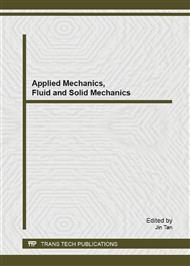p.200
p.206
p.211
p.215
p.221
p.226
p.231
p.235
p.240
The Novel Polishing Characteristics for GaAs Based Diode Lasers Wafer
Abstract:
A novel polishing technology for the GaAs based diode lasers wafer is presented. Designed for technological simplicity and minimum damage generated within the GaAs based diode lasers wafer. It combines GaAs based diode lasers wafer polishing with three conditions consisting of (1) removal of thermodynamically unstable species and (2) surface oxide layers must be completely removed after thermal cleaning, and (3) a smooth surface must be provide. Revolving ultrasonic atomization technology is adopted in the polishing process. At first impurity removal is achieved by organic solvents, second NH4OH:H2O2:H2O=1:1:10 solution and HCl:H2O2:H2O=1:1:20 solution in succession to etch a very thin layer, the goal of the step is removing contaminants and forming a very thin oxidation layer on the GaAs based diode lasers wafer, NH4OH:H2O=1:5 solution is used as the removed oxide layers in the end. The effectiveness of the process is demonstrated by operation of GaAs based diode lasers wafer, characterization of the oxide composition was carried out by X-ray photoelectron spectroscopy,and surface morphology was observed by total reflection X-ray fluorescence spectroscopy and atomic force microscope. The research results show that the polished surface without contamination, and the n-side surface are very smooth.
Info:
Periodical:
Pages:
221-225
Citation:
Online since:
December 2013
Authors:
Keywords:
Price:
Сopyright:
© 2014 Trans Tech Publications Ltd. All Rights Reserved
Share:
Citation:


